Purpose
- August 31 marks International Overdose Awareness Day (IOAD), a global campaign to end overdose.
- In 2025, CDC is highlighting the concerning rise in stimulant-involved overdose deaths, noting that stimulants are now involved in most fatal overdoses, often in combination with opioids.
- Remember loved ones who have died from drug overdose and acknowledge the grief of those left behind.
- End overdose by sharing prevention strategies.
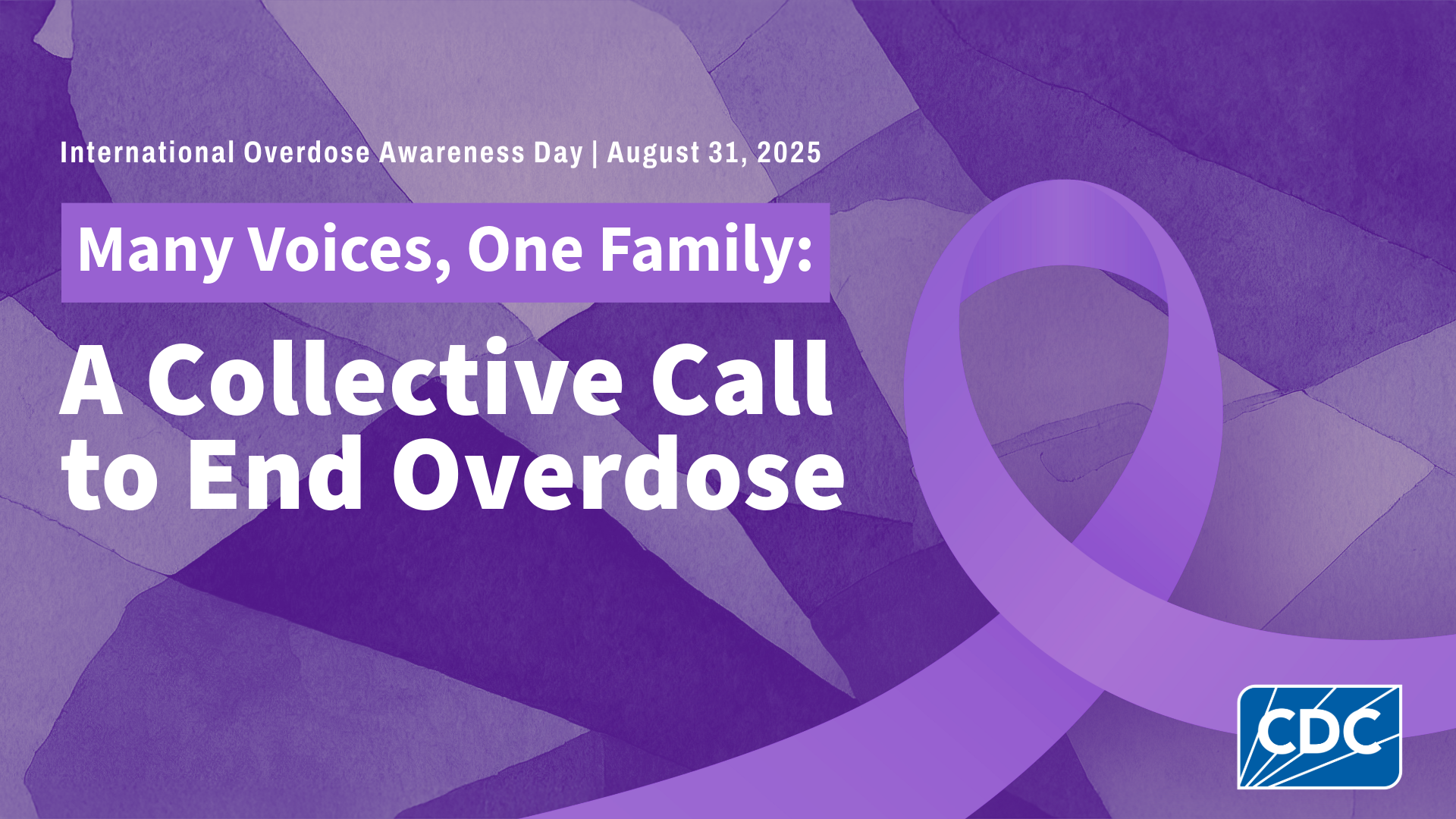
Overdose awareness is important
Each year, August 31st marks International Overdose Awareness Day (IOAD), the world's largest annual campaign to end overdose.
This IOAD, we encourage unity and collective action against overdose.
- Overdose knows no boundaries, so our efforts must connect the many voices impacted by overdoses.
- We are united in grief, empowered together to transform loss into hope and action.
Hashtags: #IOAD2025 #OverdoseAware #EndOverdose #OneBigFamily #DrivenByHope
The goals of IOAD are to:
- Honor the lives of loved ones who have died from overdose.
- Show support to people who use drugs and those in recovery that they are valued.
- Continue to raise awareness about the risks of drug overdose.
- Share information on available prevention, treatment and recovery support services.
- Promote evidence-based practices and strategies to prevent and reduce drug-related harms.
Partner with us
Join us as an IOAD partner by using your voice and platforms to spread the message of ending overdose. This partner toolkit provides free resources for you to use, including key IOAD messages, social media content, and more. In addition to this toolkit, a campaign resources overview provides a list of materials available for download and print.
Examples of how to get involved include:
- Posting IOAD messages using the hashtags #IOAD2025 #OverdoseAware #EndOverdose #OneBigFamily #DrivenByHope
- Sharing IOAD digital content, web features, and materials online.
- Using the sample partner letter to share IOAD information with communities and healthcare providers in newsletters, emails, and other partner communications.
- Downloading free educational materials and participating in interactive trainings for patients and health care providers.
- Educating communities and healthcare providers at meetings, health fairs, conferences, and other events.
Who should use this toolkit
General audiences and media
This year, CDC will mark IOAD by releasing new data and resources:
- A new Morbidity and Mortality Weekly Report (MMWR): Drug Overdose Deaths Involving Stimulants ― United States, 2018-June 2024 that uses data from CDC's State Unintentional Drug Overdose Reporting System (SUDORS) and National Vital Statistics System (NVSS) to examine drug overdose deaths involving stimulants and co-involvement of stimulants and opioids.
- Updated 2024 overdose death data on the SUDORS dashboard, based on preliminary data from a subset of states. These data will give timely and critical insights into the patterns and circumstances of fatal overdoses, helping inform and improve prevention and response efforts.
Subscribe to our newsletter
Sign up for our email newsletter below.
Lifesaving naloxone
Naloxone can reverse an overdose from opioids, including heroin, illegally made fentanyl and fentanyl analogs, and prescription opioid medications. Often given as a nasal spray, naloxone is safe and easy to use.
Anyone can carry naloxone, give it to someone experiencing an overdose, and potentially save a life.
Healthcare professionals
CDC's naloxone resources for healthcare professionals are designed to provide an overview of naloxone and provide strategies that can be implemented in your practice.
Studies show that naloxone may not always be offered when risk factors are present, such as taking higher doses of opioids, prescriptions for benzodiazepines in addition to opioids, or history of overdose.
Clinicians can:
- Educate patients and their caregivers on factors that increase the risk for overdose.
- Raise awareness about the benefits and availability of naloxone.
- Encourage patients who are at risk and their caregivers to carry naloxone.
- Explain how and when to administer naloxone.
- Highlight the importance of follow-up care for overdose.
CDC created a suite of naloxone materials and tools to support your efforts to discuss naloxone with patients. These tools can help clinicians inform patients, families, and/or caregivers about the value of naloxone in a non-stigmatizing manner.
- Factsheets and Conversation Starters Information on naloxone for a variety of audiences ranging from clinicians to patients.
- Naloxone Training Includes modules that are eligible for free continuing education and interactive patient cases.
- An Addiction Medicine Toolkit is also available to support clinicians who are working with their patients to treat or manage substance use disorder or opioid use disorder.
CDC released the 2022 CDC Clinical Practice Guideline for Prescribing Opioids for Pain. CDC developed resources and trainings for healthcare professionals to assist with implementing the guidance in their practices. We continuously develop materials so please check back periodically to see what is new.
Sample content
Use our sample social content and partner letter to spread the word. Schedule content to remind your networks about International Overdose Awareness Day.
Use #IOAD2025 #OverdoseAware #EndOverdose #OneBigFamily and #DrivenByHope to join the conversation and tag us at @CDCInjury on X (Twitter)! Additional graphics are available in campaign resources.
Sample post 1
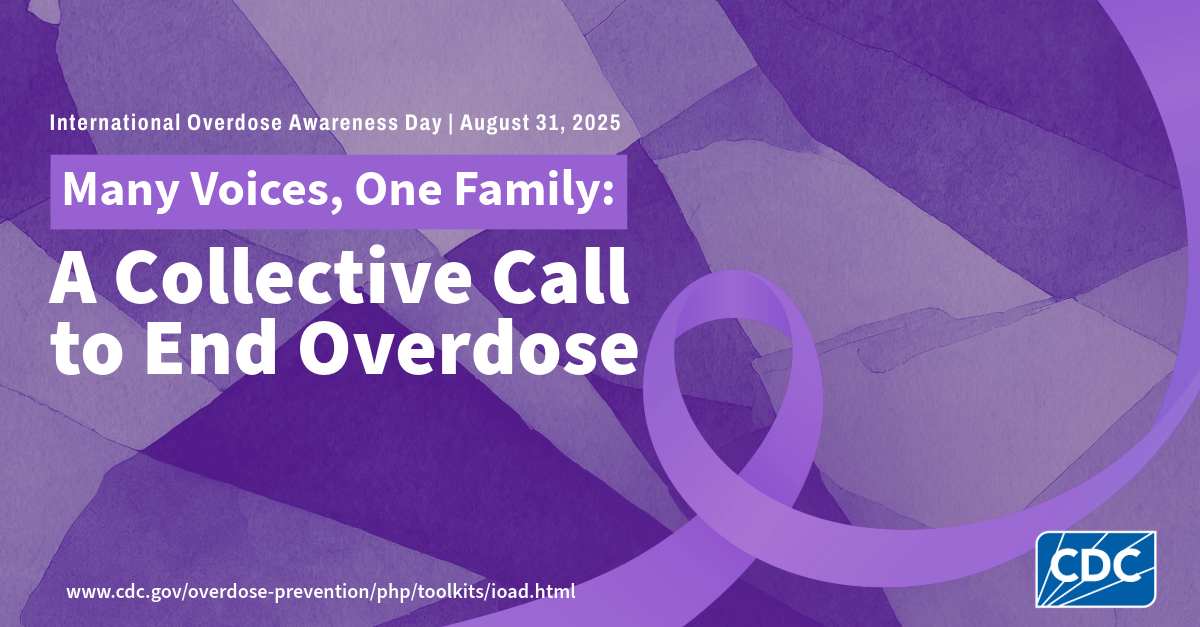
International Overdose Awareness Day is around the corner. On August 31st, join CDC and the many voices calling to #EndOverdose by sharing these resources about overdose prevention: http://bit.ly/4lQxrC5
#IOAD2025 #OneBigFamily
Sample post 2
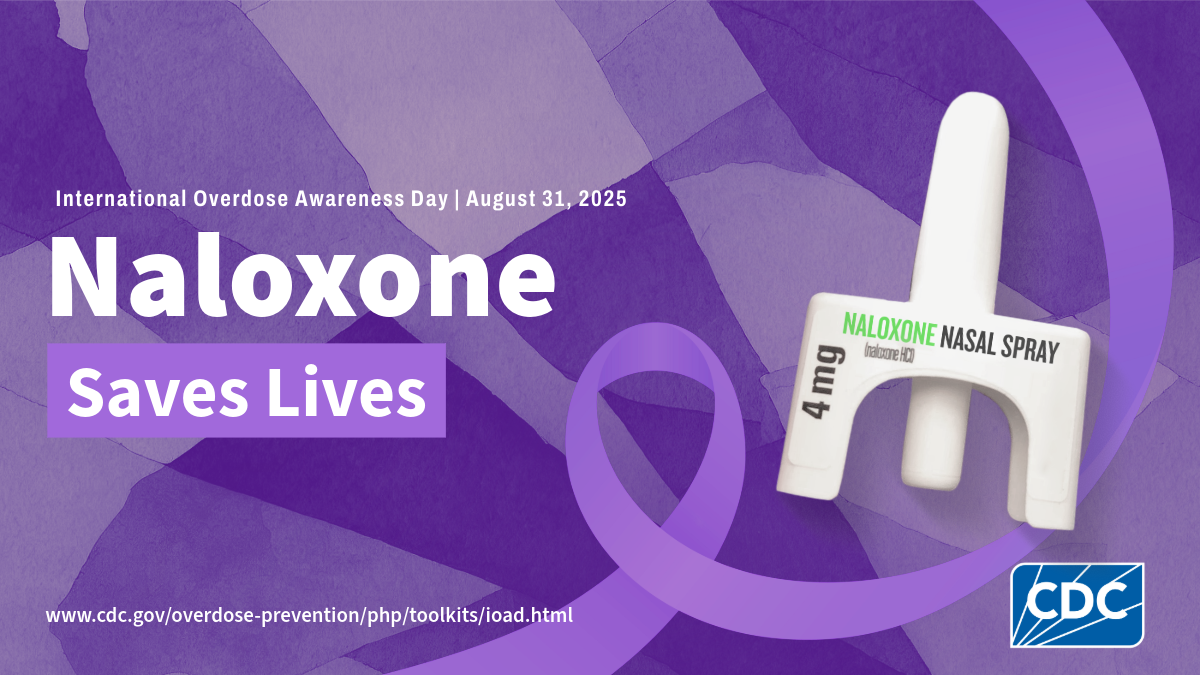
Naloxone is a lifesaving medication that can reverse an opioid #overdose. This International Overdose Awareness Day, help protect your loved ones from a fatal overdose by keeping lifesaving naloxone with you & at home. We are #DrivenByHope to #EndOverdose: http://bit.ly/47NDow5
#IOAD2025
Sample post 3
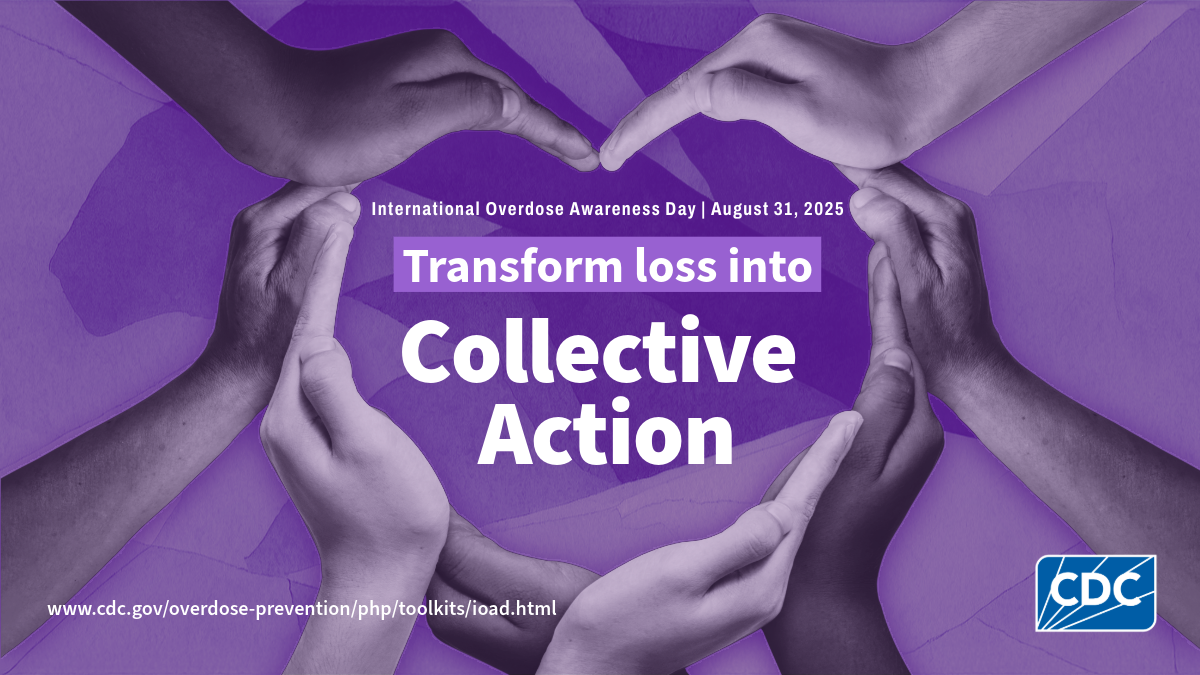
Approximately 105,000 American lives were lost to drug overdose in 2023. On this International Overdose Awareness Day, we:
- Honor those we've lost.
- Encourage treatment & recovery.
- Help communities build prevention capacity.
Join the many voices turning grief into collective action: http://bit.ly/4lGCFjB
Sample post 1
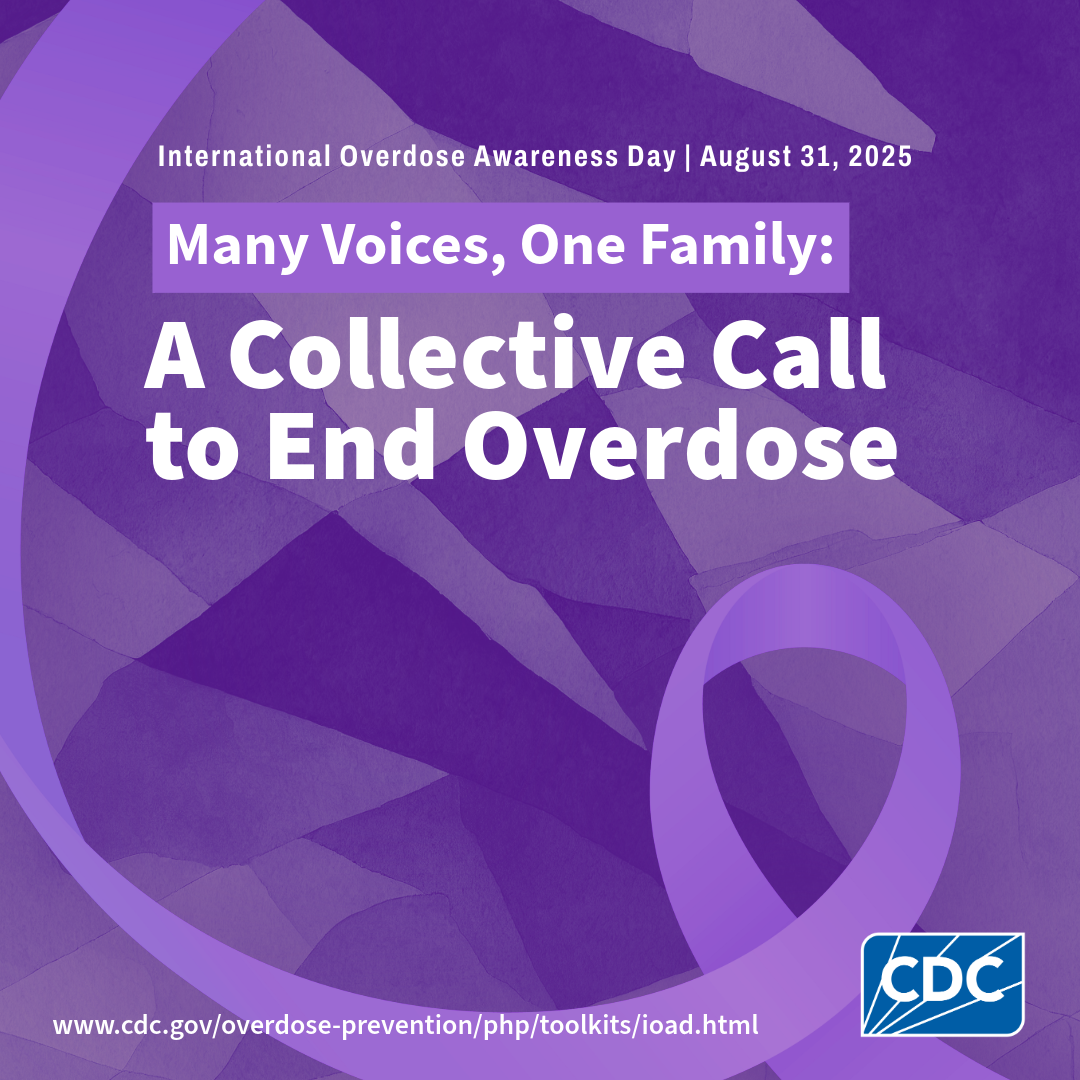
International Overdose Awareness Day is around the corner. On August 31, join CDC and the many voices calling to #EndOverdose. Click the link in our bio to get resources on overdose prevention.
Tell us how you are #DrivenByHope to end overdose in the comments below.
#CDC #PublicHealth #IOAD2025 #OneBigFamily
Sample post 2
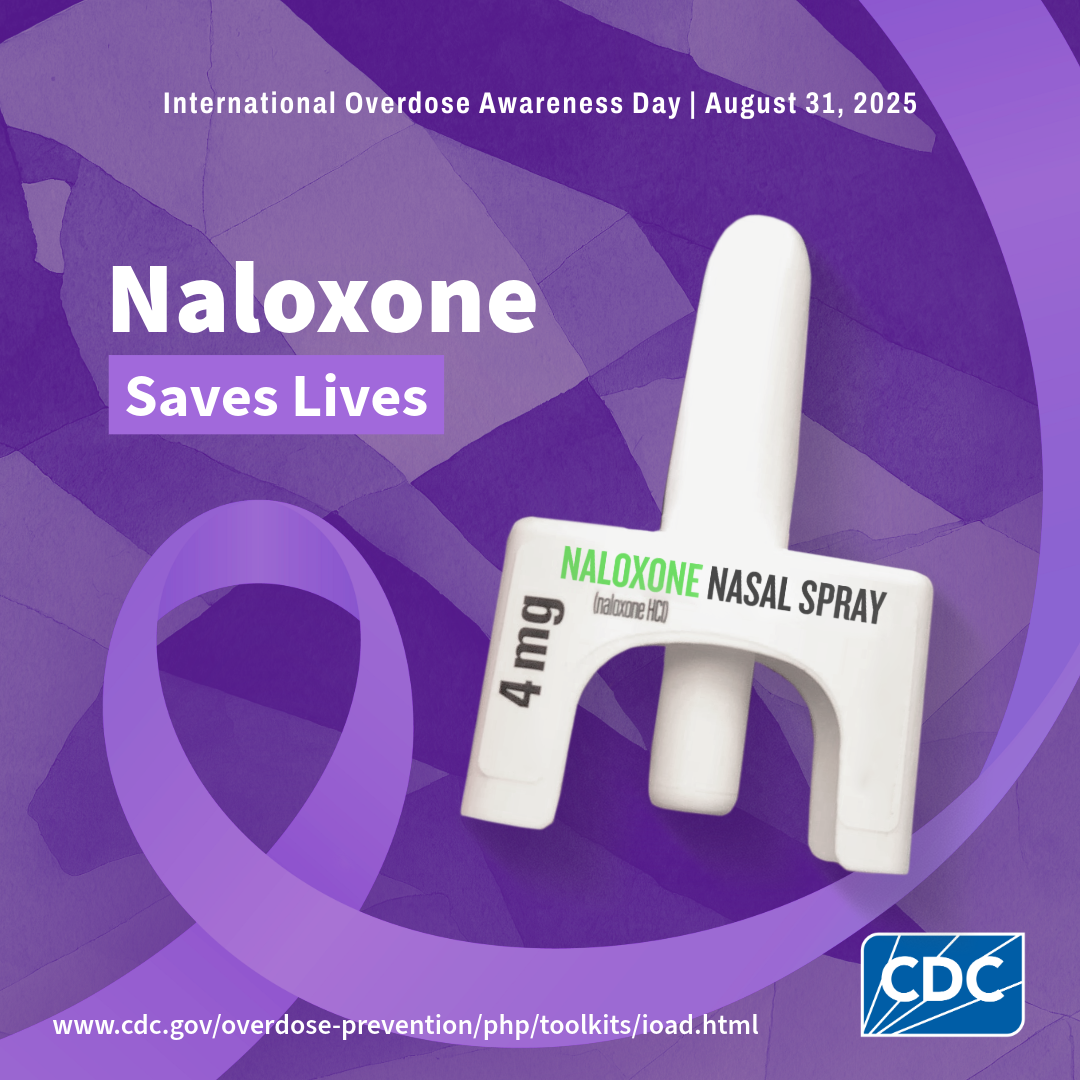
Naloxone is a lifesaving medication that can reverse an opioid overdose. In honor of this International Overdose Awareness Day, help protect your loved ones from a fatal overdose by keeping lifesaving naloxone with you & at home.
We are #DrivenByHope to #EndOverdose. Click the link in our bio for more information about naloxone.
#IOAD2025 #OneBigFamily #CDC #PublicHealth
Sample post 3

Approximately 105,000 American lives were lost to drug overdose in 2023.
On this International Overdose Awareness Day, we:
- Honor those we've lost.
- Encourage treatment & recovery.
- Help communities build prevention capacity.
Join the many voices turning grief into collective action to #EndOverdose. Resources are available at the link in our bio.
#IOAD25 #DrivenByHope #OneBigFamily #CDC #PublicHealth
Sample post 1

International Overdose Awareness Day (Aug. 31) is right around the corner. Join CDC and the many voices around the world calling to end overdose by sharing resources on overdose prevention: http://bit.ly/4g294Ac
Sample post 2
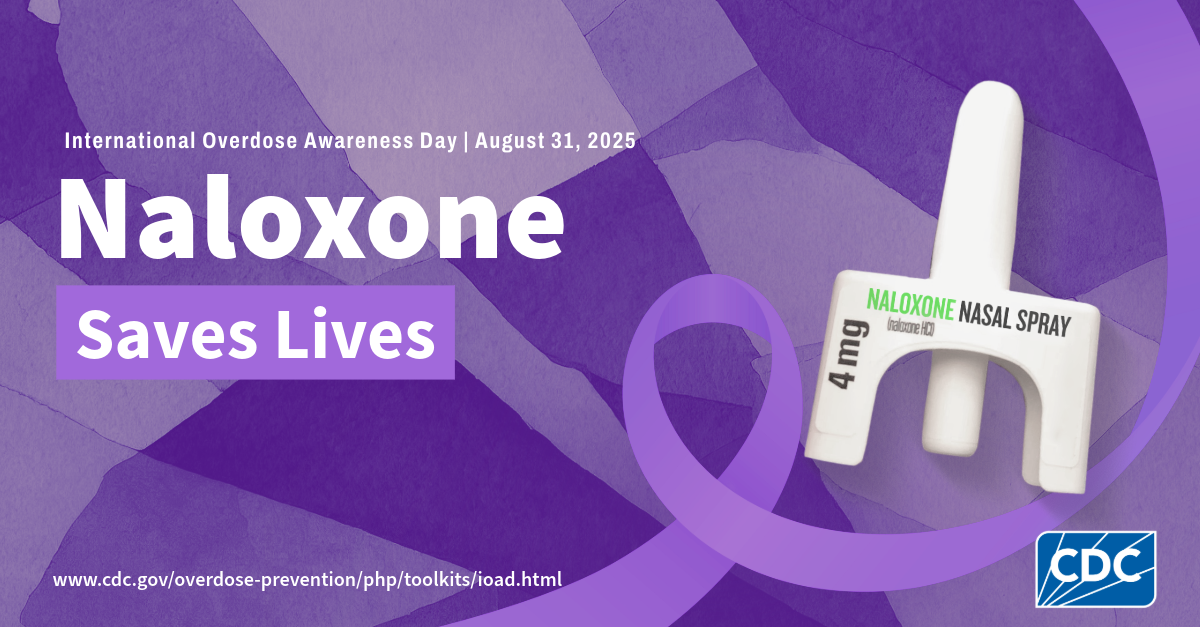
Naloxone is a lifesaving medication that can reverse an opioid overdose. In honor of this International Overdose Awareness Day (August 31), help protect your loved ones from a fatal overdose by keeping lifesaving naloxone with you and at home.
Read more about lifesaving naloxone: http://bit.ly/41XCSbd
Sample post 3
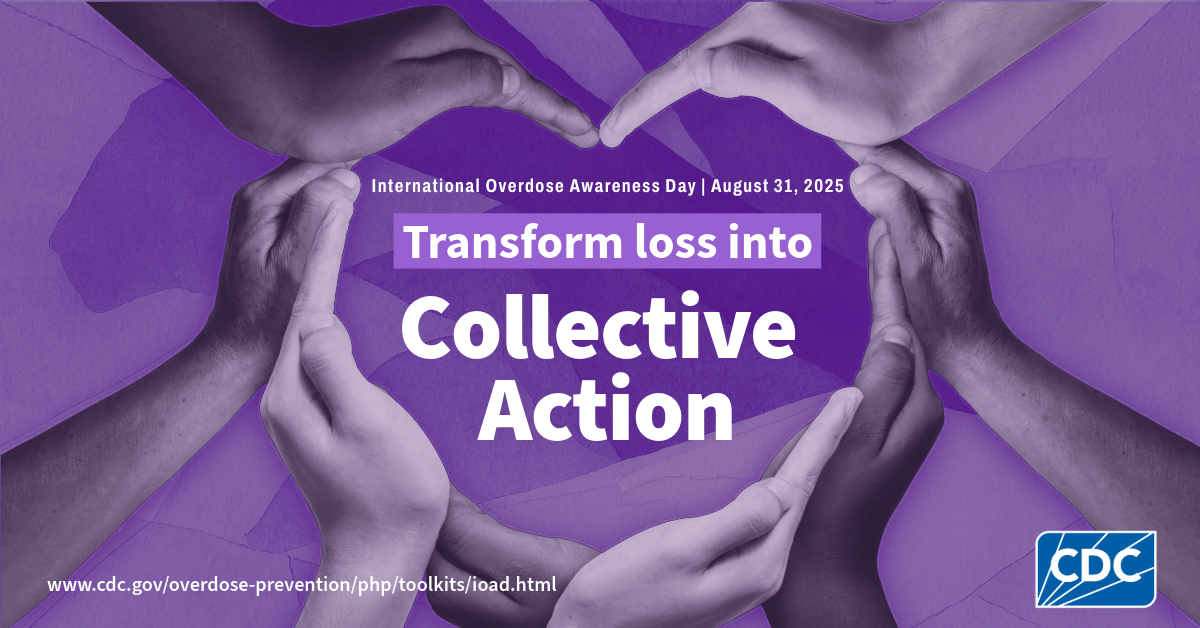
Approximately 105,000 American lives were lost to drug overdose in 2023.
On this International Overdose Awareness Day, we:
- Honor those we've lost.
- Encourage treatment & recovery.
- Help communities build prevention capacity.
Join the many voices turning grief into collective action: http://bit.ly/4mYj3IX
Sample post 1
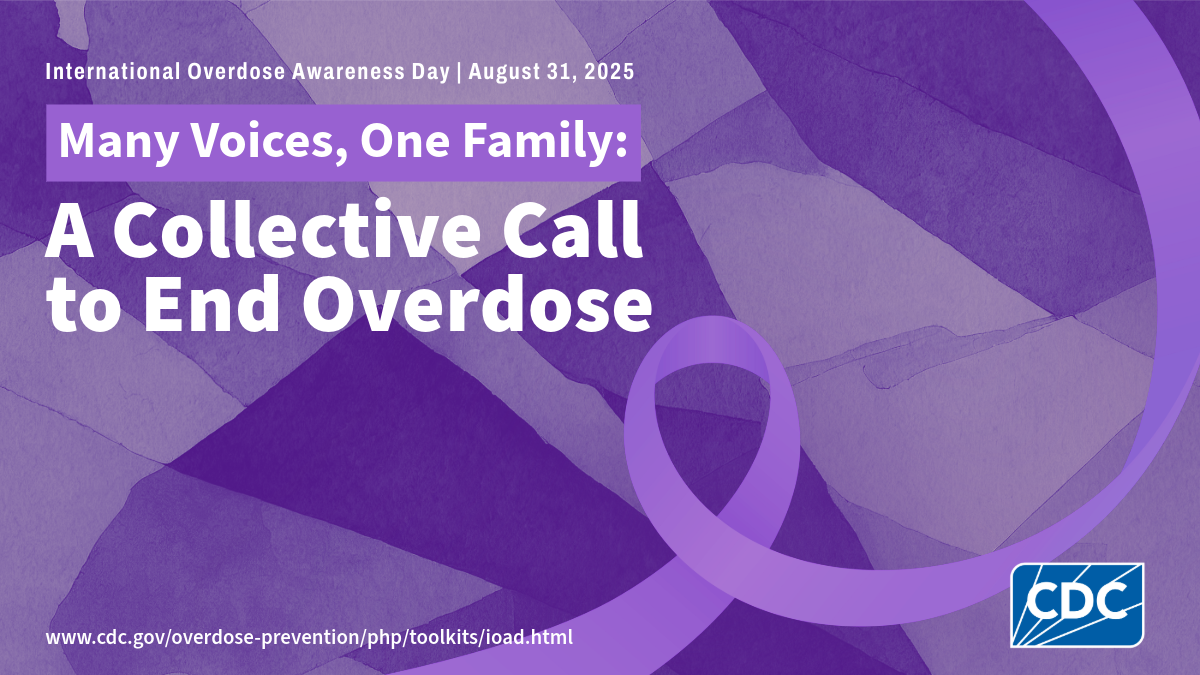
Overdose Prevention Partners: International Overdose Awareness Day is next week on August 31. Join CDC and the many voices around the world calling to end overdose by sharing resources on overdose prevention: http://bit.ly/4oQ6ssW
Sample post 2

Naloxone is a lifesaving medication that can reverse an opioid overdose. In honor of this International Overdose Awareness Day (August 31), help protect your loved ones from a fatal overdose by keeping lifesaving naloxone with you and at home.
Read more about lifesaving naloxone: http://bit.ly/4mrJy9K
Sample post 3

Approximately 105,000 American lives were lost to drug overdose in 2023.
On this International Overdose Awareness Day, we:
- Honor those we've lost.
- Encourage treatment & recovery.
- Help communities build prevention capacity.
Join the many voices turning grief into collective action: http://bit.ly/3VjmKNu
Include our sample content in email or print newsletters or other communications channels, including updates to staff, provider networks, associations, and community-based communications efforts.
For general audiences
Subject Line: International Overdose Awareness Day, August 31, 2025
Title: CDC Highlights Increased Involvement of Stimulants in Overdose Deaths as International Overdose Awareness Day Approaches
Dear Partners,
International Overdose Awareness Day (IOAD) is observed each year on August 31. It is the world's largest annual campaign to end drug overdose and remember those lost to overdose. Overdose affects people from all walks of life, and our efforts must reflect the many voices and communities impacted.
The goals of IOAD are to:
- Honor the lives of loved ones who have died from overdose.
- Show support to people who use drugs and those in recovery that they are valued.
- Continue to raise awareness about the risks of drug overdose.
- Share information on available prevention, treatment and recovery support services.
- Promote evidence-based practices and strategies to prevent and reduce drug-related harms.
This year, CDC will mark IOAD by releasing new data and resources:
- A new Morbidity and Mortality Weekly Report (MMWR): Drug Overdose Deaths Involving Stimulants ― United States, 2018-June 2024 that uses data from CDC's State Unintentional Drug Overdose Reporting System (SUDORS) and National Vital Statistics System (NVSS) to examine drug overdose deaths involving stimulants and co-involvement of stimulants and opioids.
- Updated 2024 overdose death data on the SUDORS dashboard, based on preliminary data from a subset of states. These data will give timely and critical insights into the patterns and circumstances of fatal overdoses, helping inform and improve prevention and response efforts.
IOAD Partner Toolkit
Access the IOAD Partner Toolkit which includes sample social media posts and outreach materials for you to use and share across your network. We encourage you to use these resources to amplify overdose awareness and prevention efforts in your community.
This #IOAD25, we stand as #OneBigFamily calling for collective action to #EndOverdose. Share how you are #DrivenByHope against overdose and don't forget to tag @CDCInjury on X.
Resources
